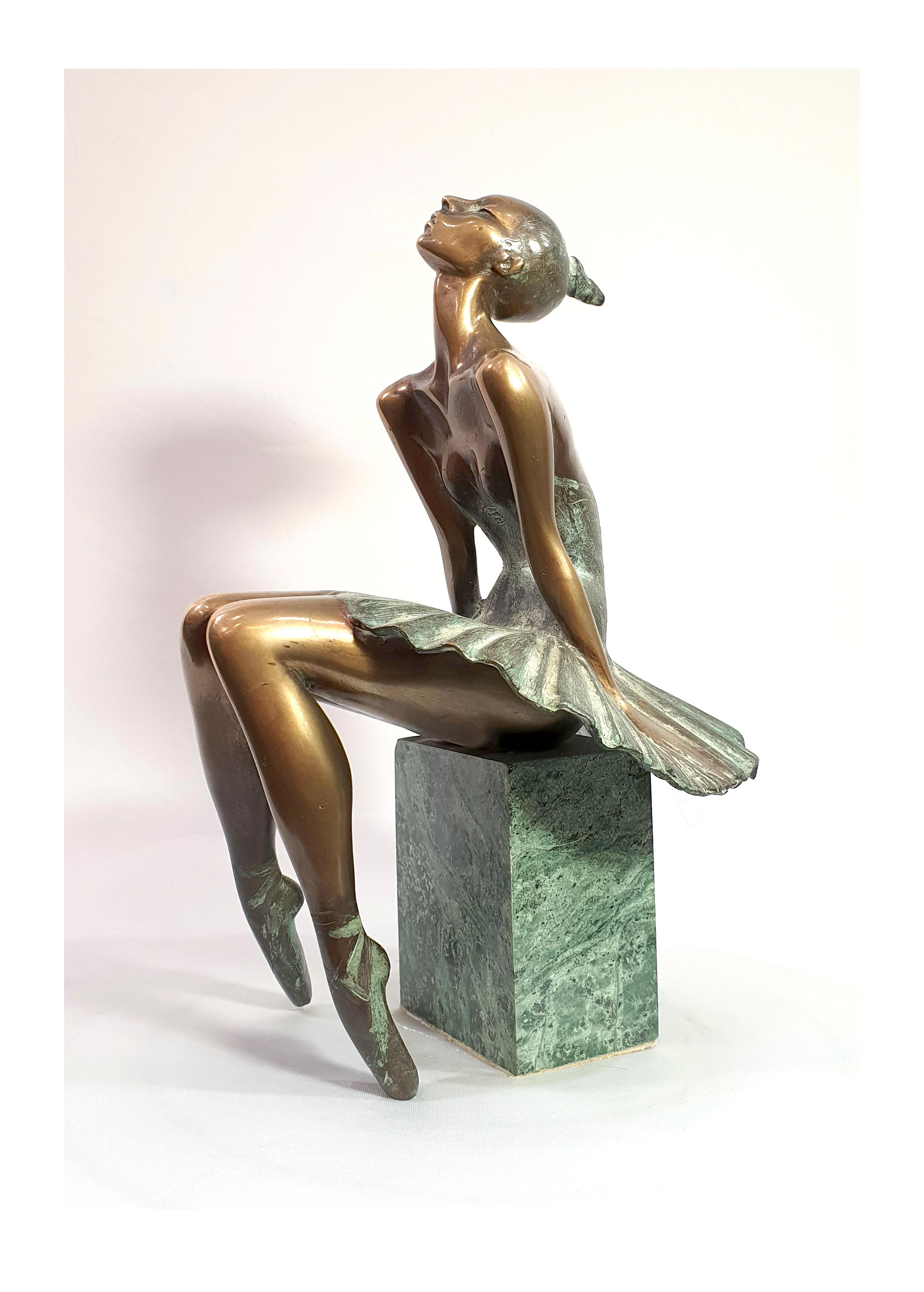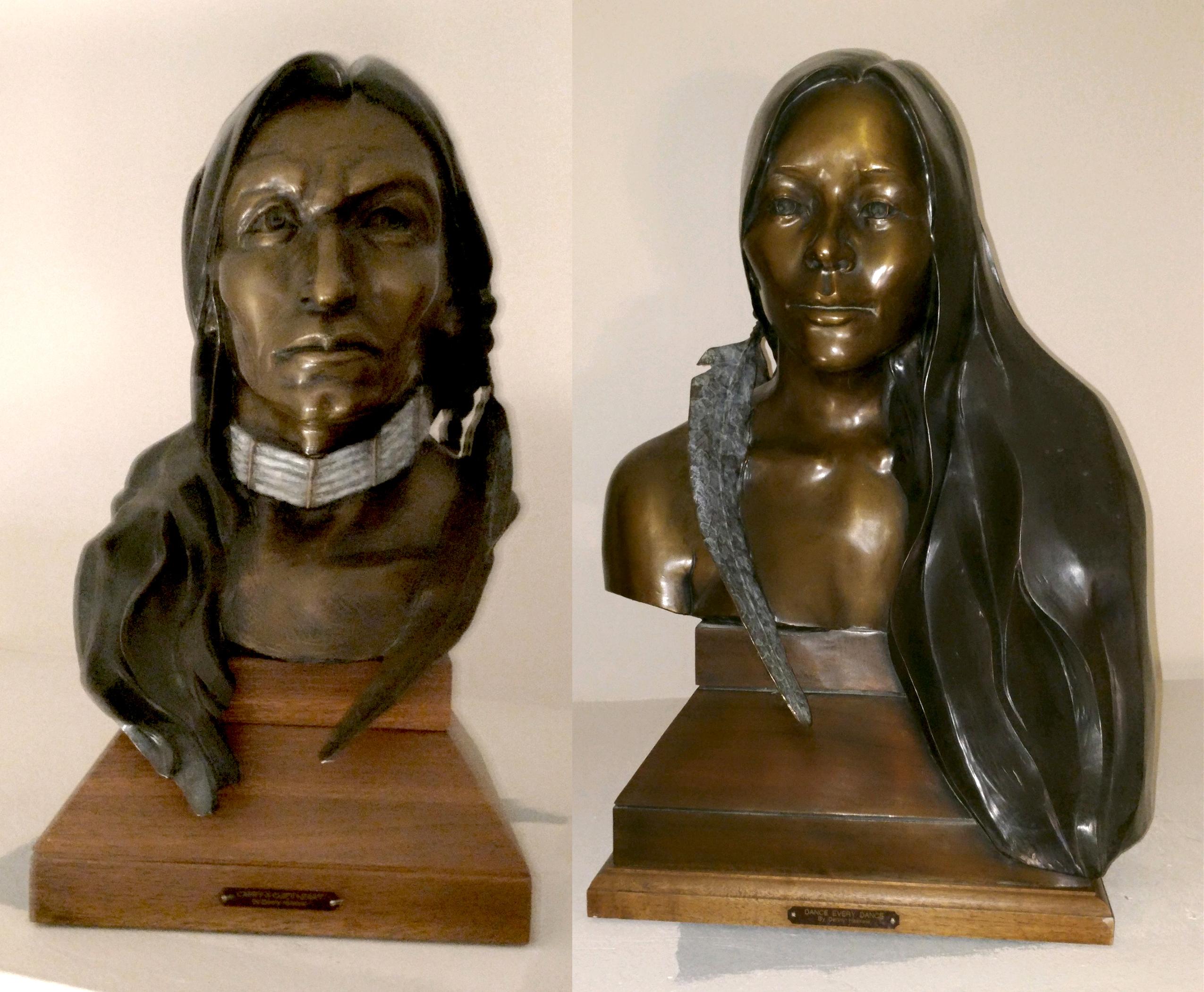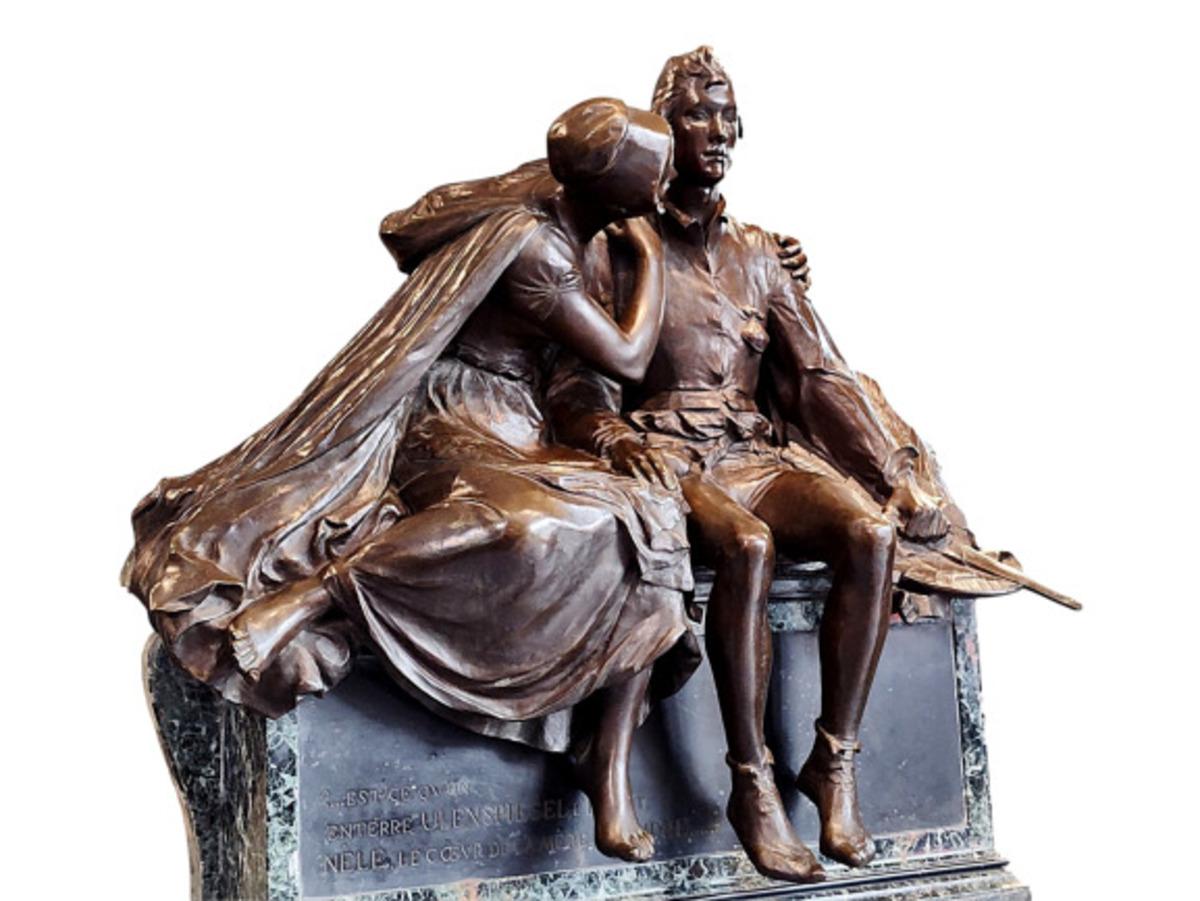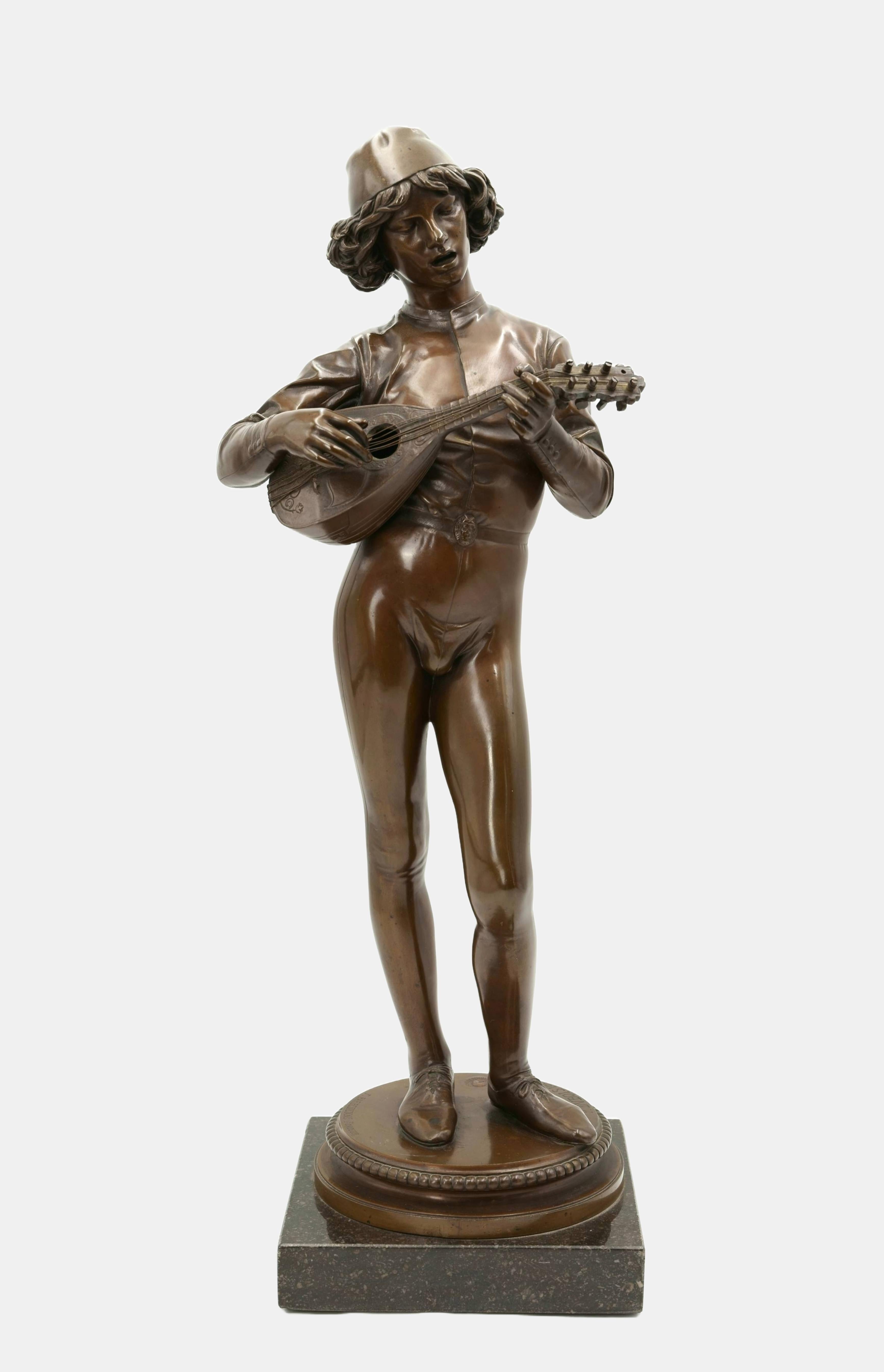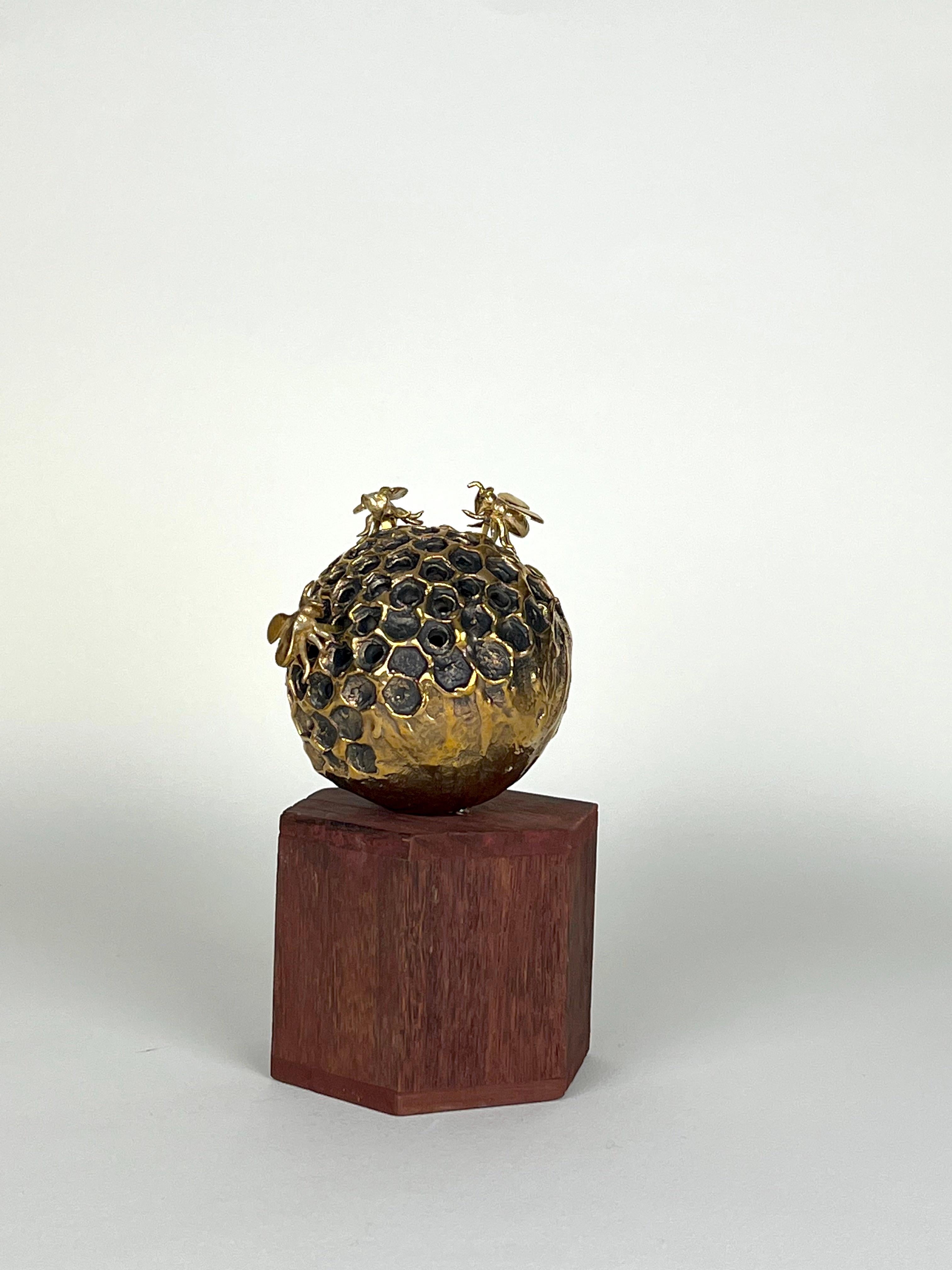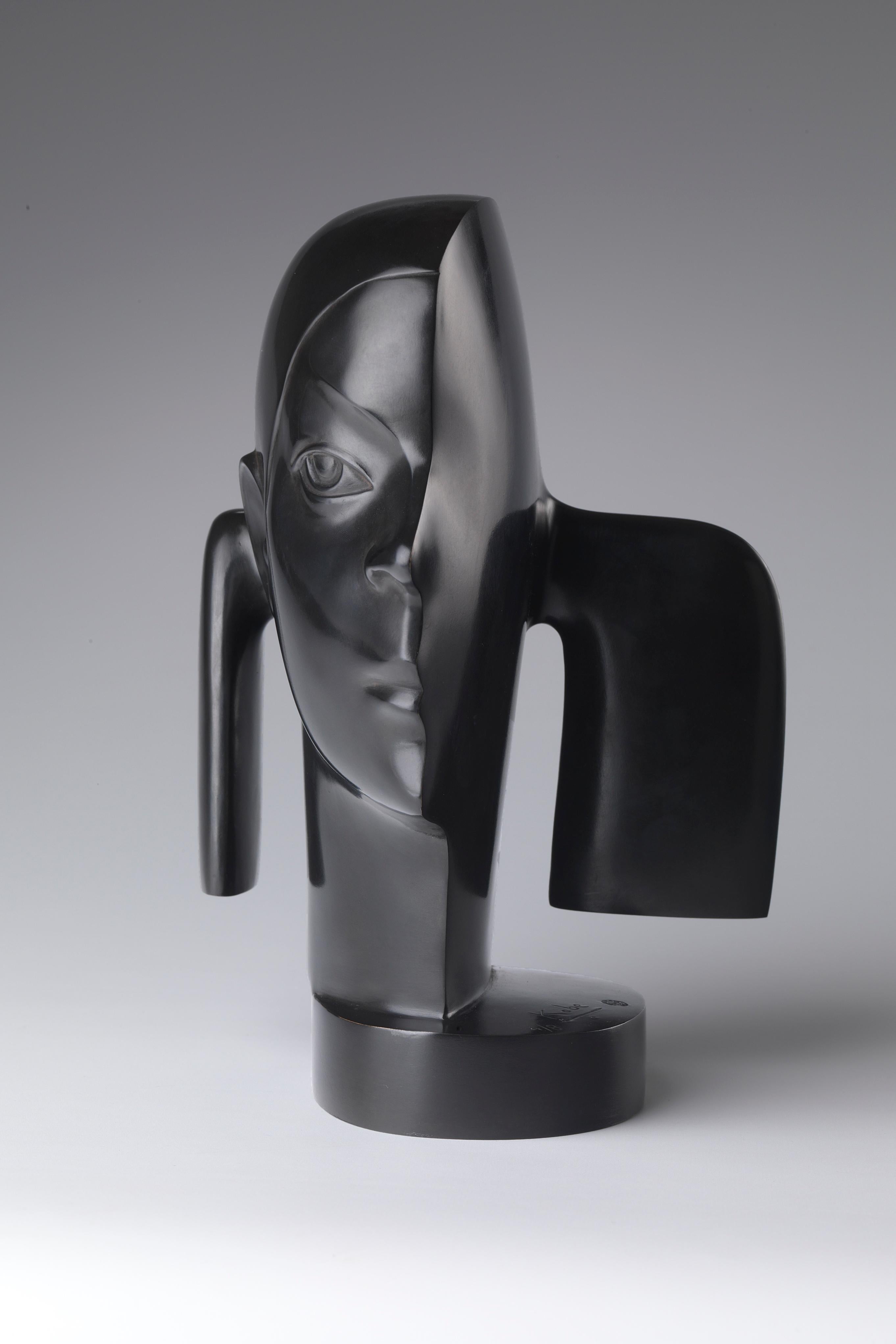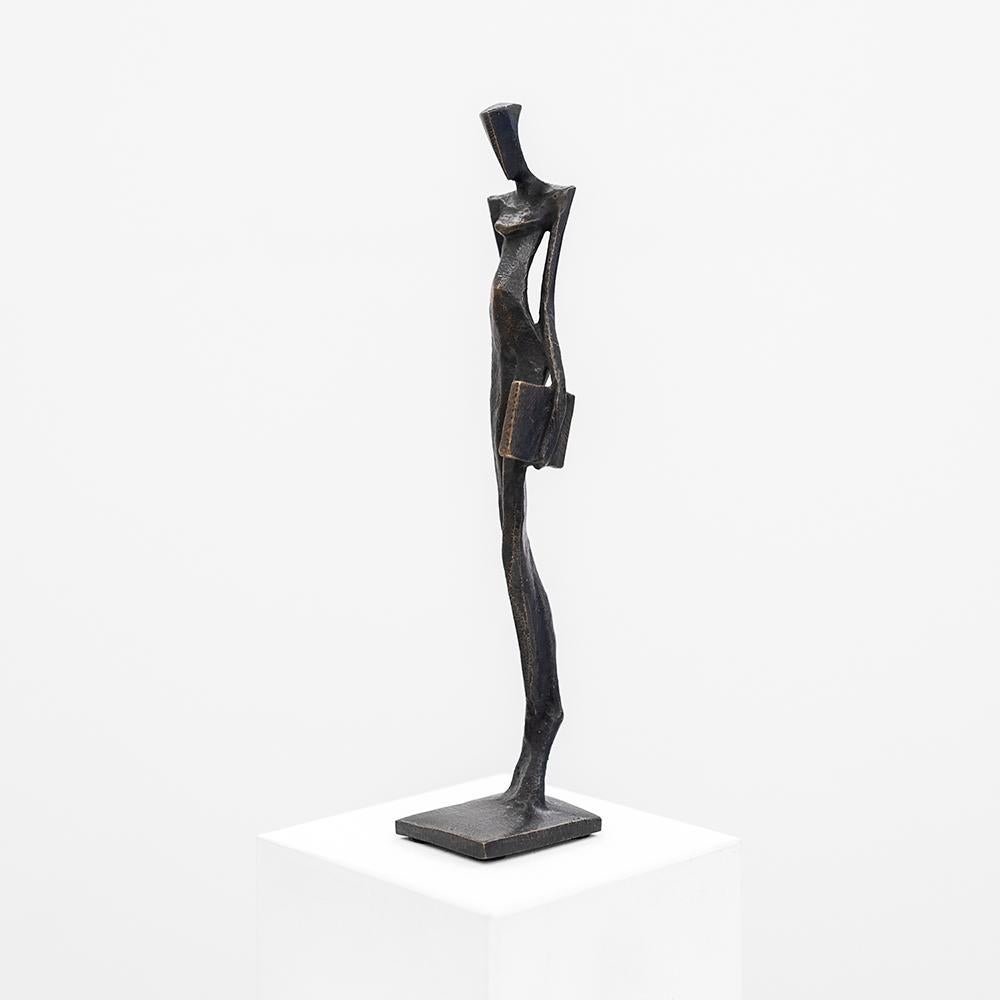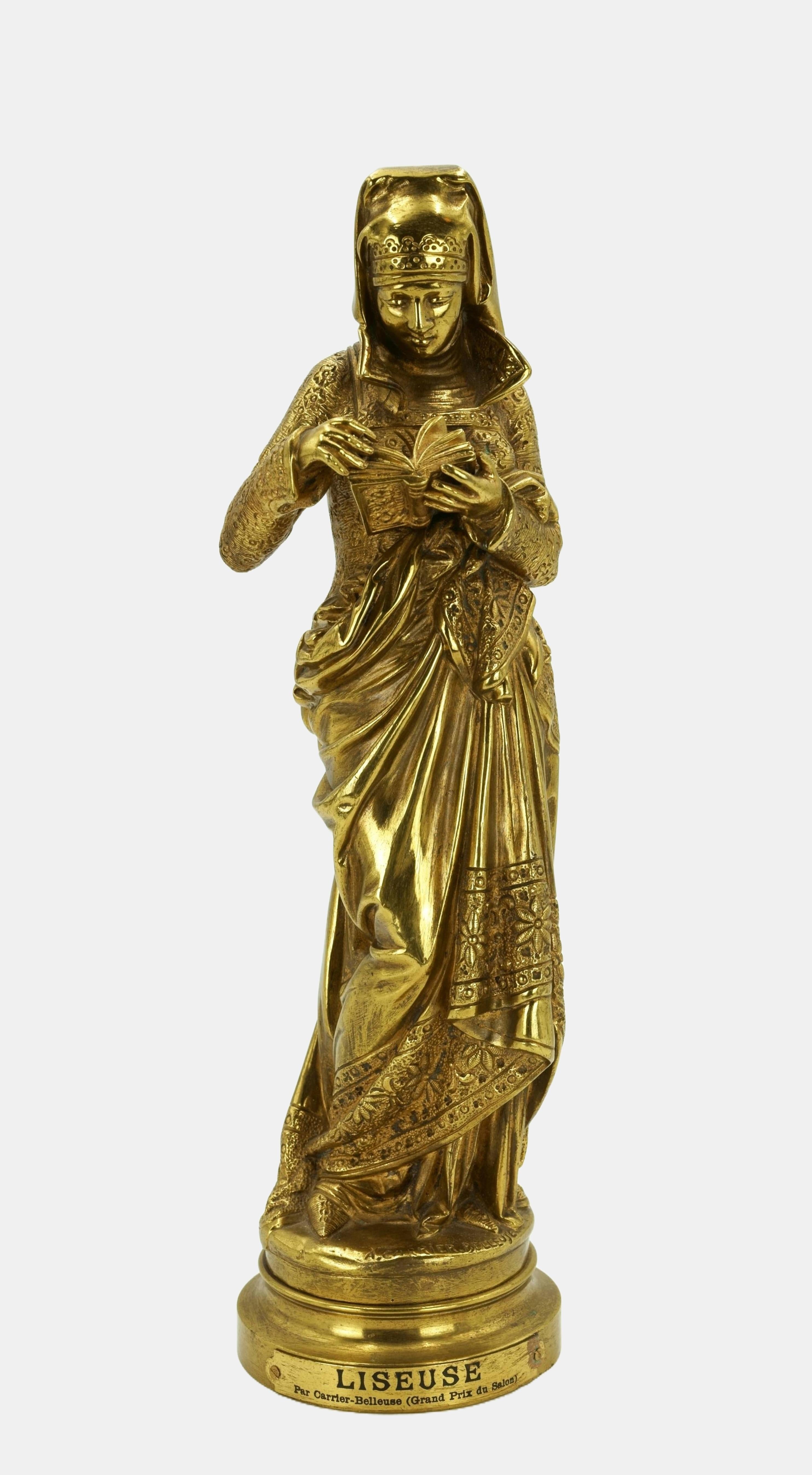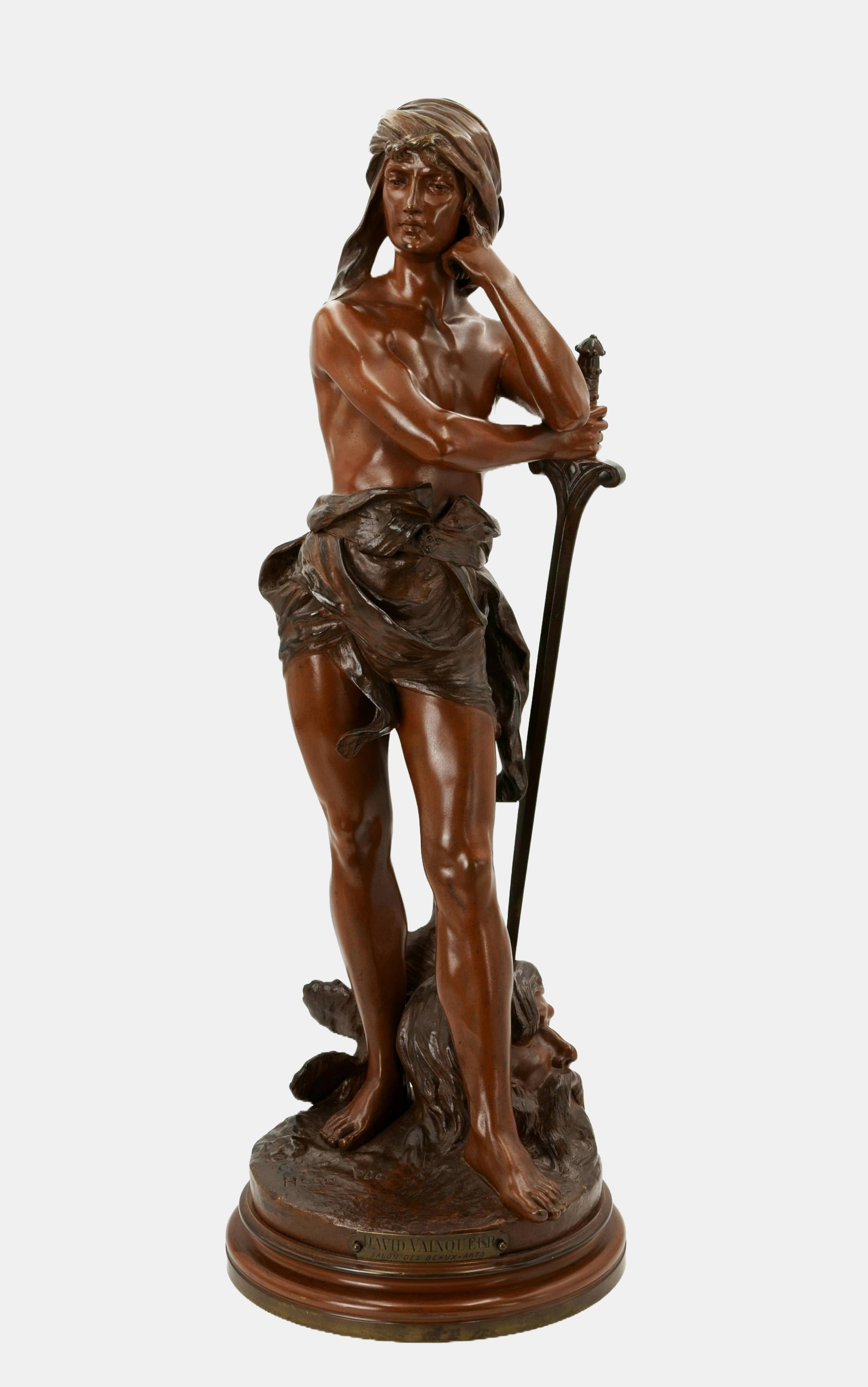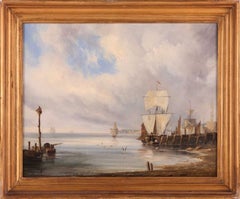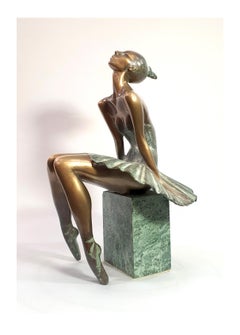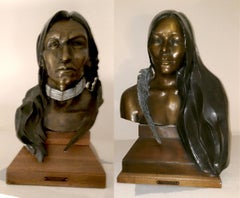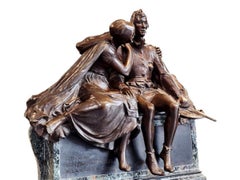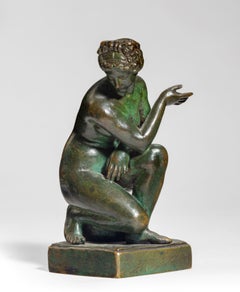
A Grand Tour bronze model of 'Crouching Venus', After the Antique
View Similar Items
Want more images or videos?
Request additional images or videos from the seller
1 of 5
UnknownA Grand Tour bronze model of 'Crouching Venus', After the Antique
About the Item
- Dimensions:Height: 4.73 in (12 cm)Width: 1.97 in (5 cm)
- Medium:
- Period:
- Condition:
- Gallery Location:Stoke, GB
- Reference Number:1stDibs: LU44638470002
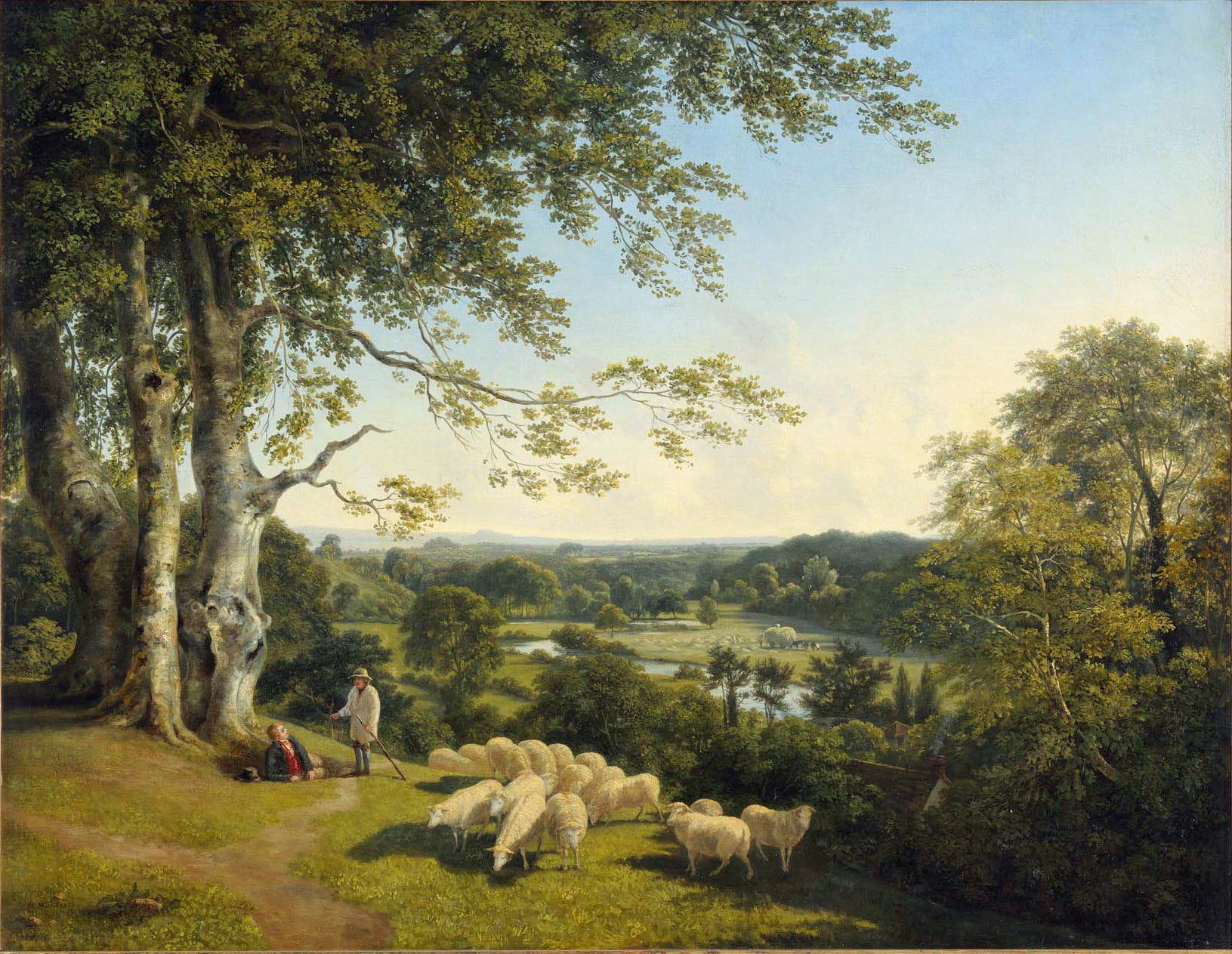
About the Seller
5.0
Recognized Seller
These prestigious sellers are industry leaders and represent the highest echelon for item quality and design.
Gold Seller
Premium sellers maintaining a 4.3+ rating and 24-hour response times
Established in 2009
1stDibs seller since 2016
166 sales on 1stDibs
Typical response time: 2 hours
Associations
LAPADA - The Association of Arts & Antiques DealersInternational Confederation of Art and Antique Dealers' AssociationsThe British Antique Dealers' Association
Authenticity Guarantee
In the unlikely event there’s an issue with an item’s authenticity, contact us within 1 year for a full refund. DetailsMoney-Back Guarantee
If your item is not as described, is damaged in transit, or does not arrive, contact us within 7 days for a full refund. Details24-Hour Cancellation
You have a 24-hour grace period in which to reconsider your purchase, with no questions asked.Vetted Professional Sellers
Our world-class sellers must adhere to strict standards for service and quality, maintaining the integrity of our listings.Price-Match Guarantee
If you find that a seller listed the same item for a lower price elsewhere, we’ll match it.Trusted Global Delivery
Our best-in-class carrier network provides specialized shipping options worldwide, including custom delivery.More From This Seller
View AllStill Life of a Copper Pan and Pewter Jug
By François Bonvin
Located in Stoke, Hampshire
Francois Bonvin (1817-1887) French
Still Life of a Copper Pan and Pewter Jug
Oil on Canvas
Indistinctly Signed
9.5” x 16” (24 x 40.7cm)
Bonvin was bor...
Category
19th Century Still-life Paintings
Materials
Oil
A pair of Harbour views
Located in Stoke, Hampshire
John Willes Johnson (1793-1863)
Harbour Scenes
A pair, oil on canvas
Both signed and dated
Canvas Size - 15 x 15 in
Framed Size - 16 x 18 1/2 in
John Samuel Willes Johnson (1793-186...
Category
19th Century Victorian Landscape Paintings
Materials
Oil
Boates moored, with the tide going out
Located in Stoke, Hampshire
John Willes Johnson (1793-1863)
Boates moored, with tide going out
Oil on canvas
Signed and dated 1830 lower right
Canvas Size - 15 x 15 in
Framed Size - 16 x 18 1/2 in
John Samuel...
Category
19th Century Victorian Landscape Paintings
Materials
Oil
Smack rigged Royal yachts
Located in Stoke, Hampshire
Johann van der Hagen (1676-1745)
Smack rigged Royal yachts
Oil on canvas
Canvas Size 30 x 25 in
Frame Size 37 x 32 in
Provenance: The Parker Gallery.
Johann van der Hagen was a Dut...
Category
17th Century Old Masters Landscape Paintings
Materials
Oil
View of Matlock High Tor, Derbyshire
By Thomas Smith (b.1720)
Located in Stoke, Hampshire
Thomas Smith of Derby (1720-1767)
View of Matlock High Tor, Derbyshire
Oil on canvas
Canvas Size 25 x 30 in
Framed Size 32 x 37 in
Provenance
Private Collection, London
Thomas Smit...
Category
18th Century Old Masters Landscape Paintings
Materials
Oil
Mr Ward on Quicksilver, the hunt beyond
By Richard Barrett Davis
Located in Stoke, Hampshire
Richard Barrett Davis (1782-1854)
Mr Ward on Quicksilver
Oil on canvas
Canvas Size - 25 x 30 in
Provenance
with Ackermann & Son, London;
where purchased by the present owner.
Born...
Category
19th Century Victorian Animal Paintings
Materials
Oil
You May Also Like
Aranae Ex-Machina - Spider Bronze Sculpture - Unique Piece
By Alain BELLINO
Located in Miami, FL
I was born in Nice in 1955. In the 80’s, I discovered the world of metal and ornamentation in my father’s workshop where I learnt gold and silver plating and bronze restoration.
After many years of practice and technical research dedicated to rehabilitating and re-composing objects, I engaged in an artistic way around 2010. The ornament that is torn from its original support then becomes the very structure of my sculptures.
Bronze ornamentations assembled by extremely precise welding are the base material. Weighted with the nobility of the material joined to their own history, they support a fragmented memory and they bring me a precious help as well as a constraint.
I got special inspiration from the Renaissance period. Vanitas are one of my favorite themes, typical of classical sceneries...
Category
21st Century and Contemporary Contemporary Sculptures
Materials
Bronze
Ballerina on a cube
Located in Zofingen, AG
"Classical ballet was my main source of inspiration. Grace and beauty of ballerinas combining with extremely hard work they do. This combination is shocking and inspiring in the same...
Category
1990s Realist Figurative Sculptures
Materials
Stone, Bronze
Dance Every Dance and Carry a Quiet Heart 24" high bronze busts
By Denny Haskew
Located in Loveland, CO
"Dance Every Dance and Carry a Quiet Heart" by Denny Haskew
Figurative Bronze Male and Female Busts, Companion pieces, Native American
Dance= 24x17x17" ed/25 #8 of 25 available as pi...
Category
1990s Contemporary Figurative Sculptures
Materials
Bronze
Thyl Ulenspiegel et Nele – Reduction of the Monument to Charles De Coster
Located in Gent, VOV
Charles Samuel – Thyl Ulenspiegel and Nele (after the Monument to Charles De Coster, 1894) Bronze, marble base, 66 x 61 x 27 cm Cast by Petermann, Brussels A moment of intimacy and d...
Category
20th Century Art Nouveau Figurative Sculptures
Materials
Marble, Bronze
Penche Monet, Atelier
By Richard MacDonald
Located in Laguna Beach, CA
Penche Monet is an exploratory piece that reveals the depth of Richard MacDonald’s study of classical ballet as he builds toward the realization of a central coda for a grand monumen...
Category
21st Century and Contemporary American Realist Figurative Sculptures
Materials
Bronze
Florentine singer / - The Renaissance of the Renaissance -
By Paul Dubois
Located in Berlin, DE
Paul Dubois (1829 Nogent-sur-Seine - 1905 Paris), Florentine singer, 1865. Light brown patinated bronze with cast round plinth mounted on a square marble base (3.5 cm high). Total height 53 cm. Bronze dimensions: 49.5 cm (height) x 20 cm (length) x 10 cm (width), weight 5.6 kg. Inscribed on the plinth "P.[aul] DUBOIS", dated "1865", with the foundry's mark "F. BARBEDIENNE FONDEUR" and the signet "REDUCTION MECANIQUE A. COLLAS".
- Patina very occasionally darkened, lute with loss of one tuning peg, otherwise in excellent condition.
- The renaissance of the Renaissance -
The bronze is a precisely executed and masterfully cast contemporary reduction of Paul Dubois 155 cm tall masterpiece "Florentine Singer", which is exhibited in the Musée d'Orsay and for which the artist was awarded the Medal of Honor at the Paris Salon in 1865. The work acted as a beacon, and was followed by a plethora of depictions of juveniles.
Inspired by Donatello and Luca della Robbia, but also by painters such as Piero della Francesca, Benozzo Gozzoli, and Pinturicchio, the "Florentine Singer" is not an epigonal work that pays homage to a vanished era, but a successful attempt to draw vitality from the art of the past and thus give it new life.
The effect of vitality is the core of Italian Renaissance art theory. In order to fulfill itself as art, art had to appear like nature. This naturalism also characterizes the "Florentine Singer". The young man appears to have been taken from life, which is reinforced by the momentary nature of his action. He has just struck a now fading chord. In addition, the natural appearance is enhanced by the detailed shaping of the figurative details, such as the laces with the slightly curved leather of the shoes, the belt buckle, or the ornamentation on the body of the lute. Even the fingernails are clearly defined. Unlike the Renaissance, however, the effect of liveliness here is not based on the "discovery" of nature and the human body, but primarily on the rediscovery of the art of the Quattrocento. The liveliness of the artwork is therefore at the same time a revitalization of this art, so that we can speak of a Renaissance of the Renaissance, just as the Pre-Raphaelites in England at the same time transferred the Quattrocento to contemporary art.
Dubois takes on the most difficult of all subjects, the depiction of singing through silent sculpture. He was preceded in this by Luca della Robbia and Donatello with their pulpits of singers created in the 1430s in the Museo dell'Opera del Duomo in Florence. Compared to these works, the physiognomy of Dubois singer is far less animated, yet he also depicts singing in a convincing manner. He uses the whole body. He takes the ancient contrapposto, which was essential to Renaissance sculpture, and transforms the standing leg-playing posture into a late medieval S-swing, giving the body an elegant beauty and at the same time setting it in melodic motion. In the equally elegant finger position, the music is expressed in a much more literal way with the beating of the lute. Finally, the musicality of the sculpture culminates in the face with the mouth open to sing.
Through the act of singing, which is a great challenge to the artistic will to depict perfect beauty, the gracefulness of the classical face is not diminished, but enhanced. Starting from the face with the singing mouth and the gaze absorbed by the sounds, the inner vitality spreads, giving the bronze sculpture an intense aura, enhanced by the music. Dubois transfers the beauty of the Renaissance to the musical, sublimating the visible sculpture to the invisible of music.
He took up the challenge of transcending the Renaissance with the Renaissance, thus responding to the Querelle des Anciens et des Modernes, which arose at the end of the 17th century around the French Academy and remained virulent into the 19th century, in which antiquity was regarded either as an unattainable ideal or as a standard to be surpassed. With his work, Dubois proved that the Renaissance, which had championed the art of the ancients, could lead to a new renaissance of art.
About the artist
Paul Dubois' great-uncle was the famous French Baroque sculptor Jean-Baptiste Pigalle, in whose footsteps the talented great-nephew followed. When he debuted at the Paris Salon in 1858, he signed his work "Dubois-Pigalle". At his father's request, however, he first studied law before devoting himself to sculpture under the tutelage of François Christophe Armand Toussaint in 1856 and entering the École des Beaux-Arts in 1858. From 1859 to 1863, he lived in Rome and traveled to Naples and Florence. Inspired by Florentine art of the quattrocento, Dubois initiated a school-forming neo-Florentine style that combined the elegantly simple forms of youthful grace with a precise wealth of detail.Two purchases by the French state (“envois de Rome”) were made during his stay in Rome, which brought him recognition in Paris. After his return there, he quickly became an internationally sought-after artist.
Dubois was also active as a creator of monuments. His most famous work is the equestrian statue of Joan of Arc (1896) on the forecourt of Reims Cathedral. He was also a sought-after portraitist who produced around 50 busts and - Dubois was also a passionate painter - around 100 portraits in oil.
From 1873 to 1878 he was curator of the Museum du Luxembourg, in 1876 he became a member of the Institut de France and from 1878 to 1905 he was director of the École des Beaux-Arts.
In 1865, Dubois was awarded the Paris Salon Medal of Honor for his “Florentine Singer”. In 1867 he became Chevalier, in 1874 Officier, in 1886 Commandeur of the Légion d'honneur, which awarded Dubois the Grande Croix in 1896.
Selected Bibliography
Stole, Elmar: Paul Dubois. In: Saur. Allgemeines Künstlerlexikon, vol. 30, Munich - Leipzig 2001, pp. 677-678.
GERMAN VERSION
Paul Dubois (1829 Nogent-sur-Seine - 1905 Paris), Florentinischer Sänger, 1865. Hellbraun patinierte Bronze mit gegossener runder Plinthe auf quadratischem Marmorsockel montiert (3,5 cm Höhe). Gesamthöhe 53 cm. Maße der Bronze: 49,5 cm (Höhe) x 20 cm (Länge) x 10 cm (Breite), Gewicht 5,6 kg. Auf der Plinthe mit „P.[aul] DUBOIS“ bezeichnet, auf „1865“ datiert, mit dem Gießereistempel „F. BARBEDIENNE FONDEUR“ und dem Signet „REDUCTION MECANIQUE A. COLLAS“ versehen.
- Patina sehr vereinzelt nachgedunkelt, Laute mit Verlust eines Stimmwirbels, ansonsten ausgezeichnet erhalten.
- Die Renaissance...
Category
1860s Realist Figurative Sculptures
Materials
Bronze
